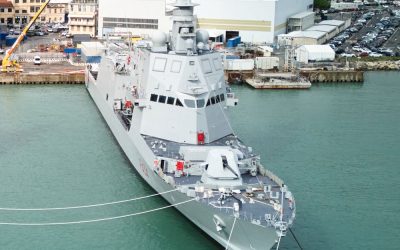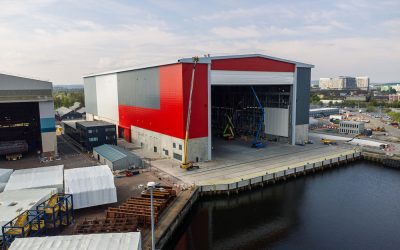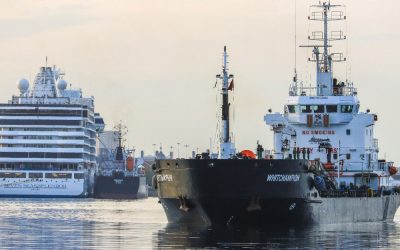Despite a surge in orders for methanol-ready vessels during the past year it’s LNG that continues to have the competitive edge over other alternative fuels, according to Lloyd’s Register’s principal gas expert.
Panos Mitrou, global gas segment director for LR, tells The Naval Architect that the characteristics of LNG remain a competitive challenge for LNG – and could yet drive it out the market – he doesn’t think the enduring problem of methane emissions will prove a “show stopper”, pointing to the emerging technologies currently being explored to address this.
He explains: “On an absolute well-to-tank basis we can trace and measure the exact methane footprint of producing LNG and can further improve this in the years to come. With methane slip side engine combustion is the only area that we can’t put our hands on.”
While huge progress has been made in reducing methane slip from high-pressure gas injection two-stroke engines in recent years there has been less success with four-stroke and low-pressure two-stroke engines using Otto combustion, negating a substantial part of LNG’s cleaner benefits. Mitrou points to increased usage of shaft generators as an alternative to auxiliaries for electrical loads as a notable solution.
For those owners who would still prefer four-stroke engines, ongoing developments with oxidation catalysts may prove the answer. Another possible option he highlights is the use of plasma-assisted oxidation of methane, however these technologies have yet to be validated in a marinised environment. In September 2022, LR became a founding partner in the Methane Abatement in Maritime Innovation Initiative (MAMII) which is now undertaking a range of pilot projects, starting with the installation of a plasma reactor onboard an actual vessel to assess its feasibility.
Bio LNG and carbon capture
While running a vessel on LNG today effectively guarantees attainment of nearer-term decarbonisation targets it also buys time for the carbon value chain to augment. One important factor is likely to be the availability of bio LNG, sourced from sustainable feedstocks. Mitrou notes last year’s independent study commissioned by industry coalition SEA-LNG gave a credible indication of the potential of meeting demand, although he cautions it’s important that shipping seizes the initiative to claim its share from the biomass pile.
Onboard carbon capture and storage (CCS) is a solution that he believes “works perfectly” with LNG, not least because the technologies (and CO2 disposal infrastructure) remain years from maturity. Even then, CCS’s viability will depend on whether these solutions are competitively priced compared to the cost of alternative fuels and any attendant vessel conversion.
During the last year, LR has granted approvals in principle to two CCS concepts. Dutch company Value Maritime’s Filtree system is said to capture up to 40% of CO2 emissions via a chemical medium that will be trialled on two MR tankers. Norway’s Rotoboost employs a completely different process of thermocatalytic decomposition which creates graphite as a byproduct and can potentially achieve 100% CO2 capture.
Clean LNG
LR officially adopts an agnostic perspective, nevertheless Mitrou advocates a risk-based approach to decision making. “With LNG the risk profile of the fuel is that you win more now with carbon regulations compared to conventional fuel and are not exposed to a technology risk.
“Keep in mind that by going to LNG, with the right application, you save 24-25% from day one of a ship’s delivery… When we’re talking about a strategy during the transition, momentum is very important. Having 10 years to decide your next move, especially if that is CCS, is going to be a huge luxury.”
A further means of reducing emissions from LNG, one which Mitrou suggests has been overlooked by the somewhat blinkered dictates of the European Union, among other regulators, is what he calls ‘clean LNG’. Closer control and abatement of methane emissions from well to tank, particularly around the liquefaction process, could be achieved through the use of renewable green energy that minimises the carbon footprint.
“There is another 10-12% [in carbon reduction], something like 50% of what we win today, given the overall gain when using LNG for a high-pressure engine is approximately 24%. If you add on top of that bio or synthetic LNG, and CCS and you reach the compliance point you want,” says Mitrou.
“In the future, today’s LNG fuel user will have in the future a portfolio of alternatives to work on, with methane abatement a must-have, and then play between clean fuel blends, cleaner LNG and CCS. Using all of them in a different manner, on a strategy basis, so that you pick at any time or place in the world the one that is cheaper and more efficient,” he concludes.






